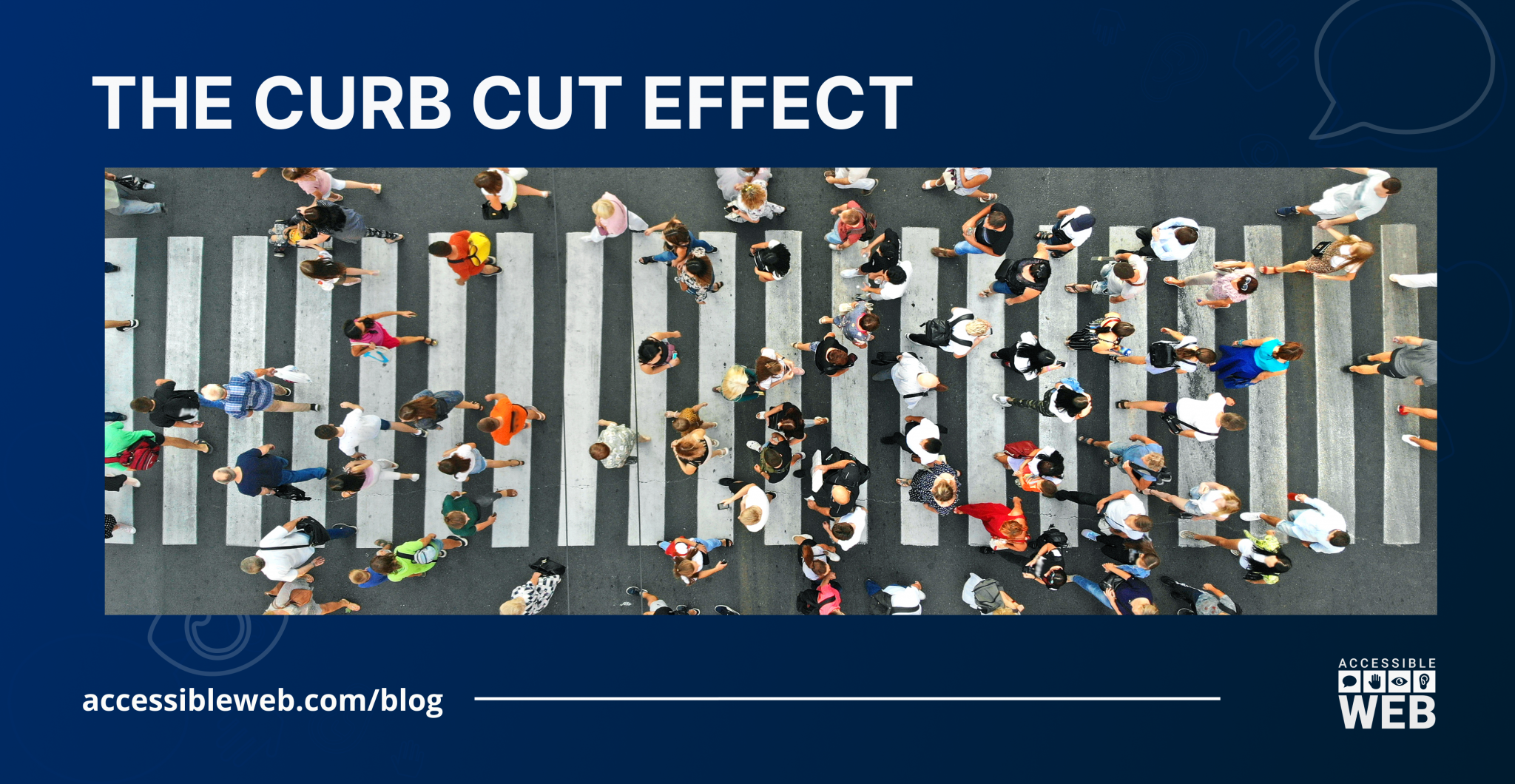
The Curb Cut Effect: 7 Ways the ADA is for Everyone
Laws, programs, and accommodations designed to help people with disabilities often end up benefiting all of society. This is called the Curb-Cut Effect.
The ADA was the first piece of legislation to prohibit discrimination against individuals with disabilities in all areas of public life, including jobs, schools, transportation, and all places open to the general public. During the July 26, 1990, signing ceremony for the Americans with Disabilities Act, George H. W. Bush said, “Today’s legislation brings us closer to that day when no Americans will ever again be deprived of their basic guarantee of life, liberty, and the pursuit of happiness.”
Even if you don’t have a disability, you likely benefit from the Americans with Disabilities Act (ADA) on a daily basis.
Let’s take a look at 7 Ways the ADA benefits everyone:
- It’s called the “Curb-Cut Effect” for a reason! Design features intended to allow wheelchair access help create more easily navigable spaces for everyone. Parents with strollers, workers pushing hand trucks, and travelers with rolling luggage all benefit from curb cutouts and ramps originally installed for wheelchair access.
- Travelers benefit from the ADA too. The ADA’s signage regulations make finding your train, bus, or airplane easier. Important signs, like informational and directional signs, must be placed in convenient locations that make them easy to find and understand. Today, signs are designed with high-contrast colors, non-glare finishes, and readable fonts so they are more accessible for people with visual impairments. This also makes signs easier to read from a distance or at a glance.
- Distracted pedestrians and elevator riders benefit, often subconsciously, from auditory cues (beeping) designed to help blind people. A distracted pedestrian may be reminded to cross the street by the beeping noise of a crosswalk, for example.
- Accessible ATMs, water fountains, voting booths, tables, and ticket machines all benefit children and people who are shorter, in addition to wheelchair users.
- Elevators in public transit, shopping centers, and buildings with more than 3 floors make everyone’s life easier. Parents with small children, people with luggage, elderly people, people carrying groceries, and anyone feeling tired after a long day all benefit from having an alternative to stairs.
- ADA requirements for doors and door handles also make life easier for everyone. All door handles must be usable with only one hand, which benefits anyone carrying or pushing something while trying to enter a building, and they should open without requiring excessive force. This allows people with disabilities to open doors and navigate spaces, but it also makes things easier for people who are younger, older, weaker, or trying to multitask.
- Lots of people enjoy closed captions, subtitles, and video/audio transcriptions for reasons other than hearing loss or deafness. They add clarity, improve engagement/concentration, and allow people to enjoy video content in a wider variety of settings–even for those with perfect hearing!
The disability community is the only minority group that anyone can join at any time. According to the CDC’s “Disability Impacts All of Us” report, 26% of American adults have some form of disability. That is approximately 61 million American adults. Your likelihood of developing a disability increases with age: 2 in 5 American adults over 65 have a disability. Similarly, many of us experience temporary disability, following an injury or while recovering from surgery, at some point in our lives.
How the ADA Helped Shift the Narrative on Disability
The passage of the ADA helped improve society for all of us by making public spaces and new infrastructure more usable for everyone. As the World’s first real declaration of equal rights for people with disabilities, the ADA also helped reduce the stigma around disability and individual differences. It started to shift the narrative around disability by making inclusion, not exclusion, the expectation.
More accessible schools help expose children to differences from an early age. Families with handicapped members are now able to enjoy amusement parks, sporting events, museums, and fairs thanks to accessibility features and reasonable accommodations. We’ve also seen the growth of adaptive sports and increased representation of people with disabilities in the media.
Whether or not you live with a disability, everyone benefits from a more inclusive society. When people with disabilities can fully participate, the entire community gains from their presence, ideas, and skills that would otherwise be missed.
Why the fight for Disability Rights Didn’t End with the Passage of the ADA
The passage of the ADA was the floor, not the ceiling when it comes to the rights and inclusion of people with disabilities. There are still major limitations to the ADA and an enormous amount of work left to be done.
Unfortunately, people with disabilities are still excluded from employment and economic opportunity. According to the Bureau of Labor Statics and the US Department of Labor, only 19.1% of adults with disabilities are employed. That is compared to 66.3% of non-disabled adults. Similarly, people with disabilities face significant barriers when trying to vote or access quality healthcare.
The fight is not over until all people have equal access to education, employment, voting rights, the internet, technology, and quality healthcare. As Justin Dart, Jr.–a disability activist who was instrumental in the passage of the ADA– wrote in 1990, the ADA “is only the beginning. It is not a solution. Rather, it is an essential foundation on which solutions will be constructed.”